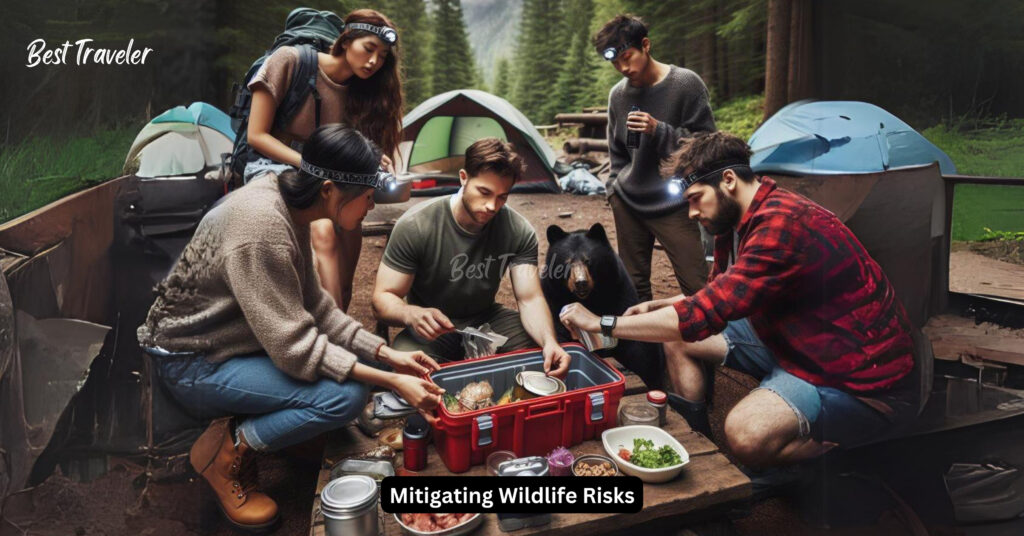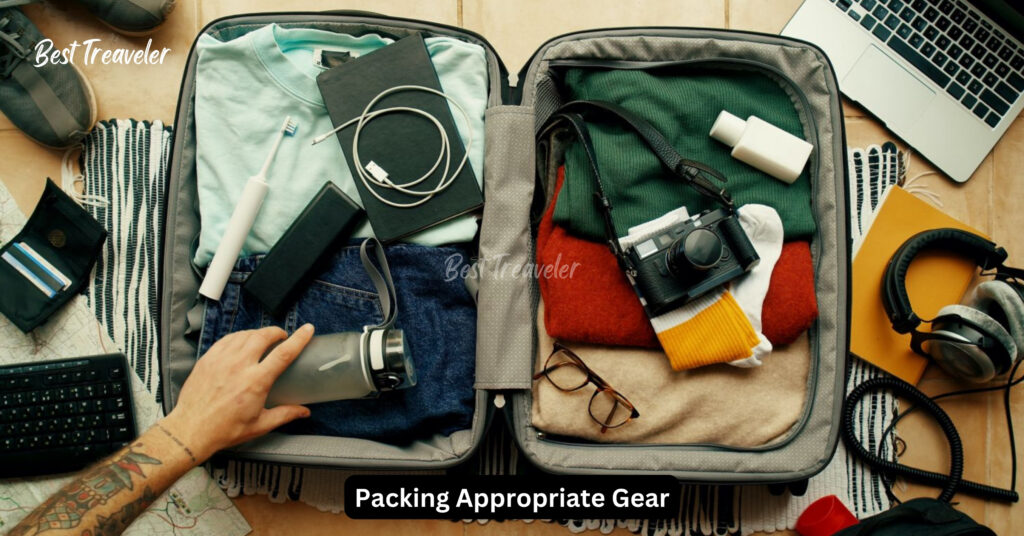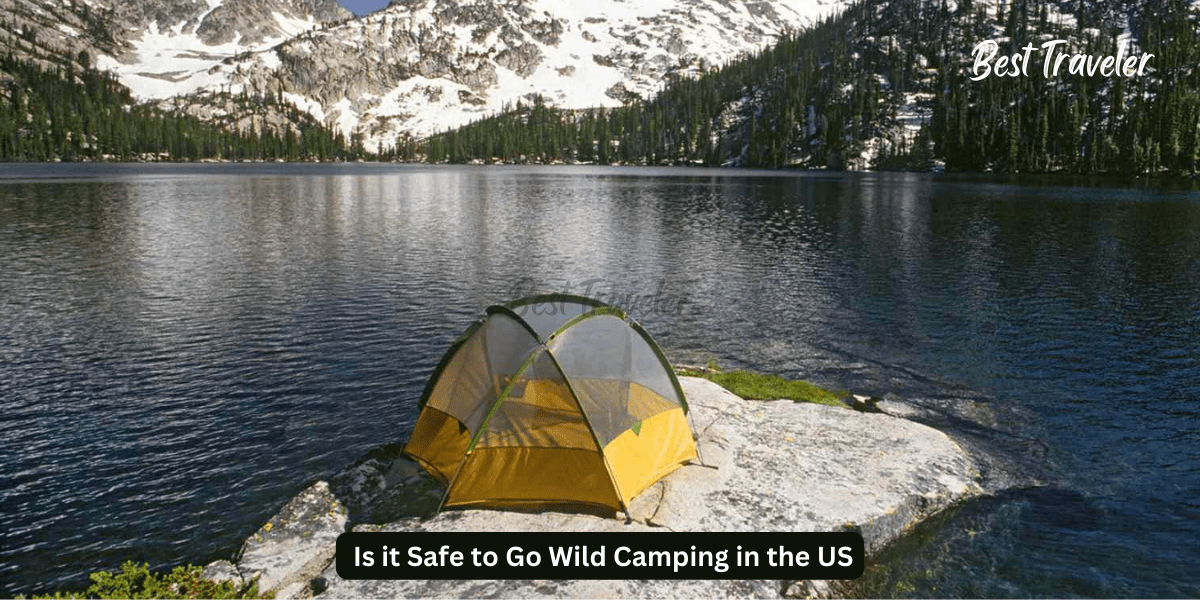Wild camping, also known as dispersed camping, backcountry camping, or primitive camping, is an adventurous outdoor activity that involves setting up camp in remote areas away from designated campgrounds.
It offers a unique experience of immersing oneself in nature, away from the hustle and bustle of civilization. However, as with any outdoor activity, safety considerations are paramount. In the United States, where there is an abundance of diverse landscapes ranging from rugged mountains to vast deserts, the safety of wild camping varies depending on various factors.
In this comprehensive guide, we will explore the safety aspects of wild camping in the US, providing insights, tips, and precautions to ensure a safe and enjoyable experience amidst the wilderness.
Understanding the Risks

Wildlife Encounters
Encounters with wildlife are among the most significant concerns for wild campers in the US. The country boasts a rich biodiversity, with various species of wildlife, some of which can pose potential threats to campers. Understanding how to mitigate the risks associated with wildlife encounters is essential for ensuring a safe and enjoyable camping experience.
Wildlife encounters can range from awe-inspiring sightings to potentially dangerous situations, particularly when campers inadvertently disturb or startle animals in their natural habitats. Among the most notable wildlife encounters that campers may face are those involving large mammals such as bears, mountain lions, and moose.These encounters can be unpredictable and may escalate if proper precautions are not taken.
Bear Encounters

Bears are among the most iconic and potentially dangerous wildlife species in the US. While black bears are more common and generally less aggressive than grizzly bears, both species can pose risks to campers, especially if they perceive humans as a threat or a source of food.
Bear encounters often occur when campers fail to properly store food or attractants, leading bears to investigate campsites in search of easy meals. In some cases, bears may exhibit defensive behavior if they feel threatened or startled, potentially resulting in aggressive encounters.
Mitigating Wildlife Risks

Encounters with wildlife are among the most significant concerns for wild campers in the US. The country boasts a rich biodiversity, with various species of wildlife, some of which can pose potential threats to campers. Understanding how to mitigate the risks associated with wildlife encounters is essential for ensuring a safe and enjoyable camping experience.
To mitigate wildlife risks while wild camping in the US, campers should adopt proactive measures aimed at minimizing interactions with potentially dangerous animals and promoting coexistence with wildlife.
Wildlife Awareness and Education
Wildlife awareness and education are crucial tools for fostering a future where humans and wildlife can coexist. By educating people about the amazing diversity of wildlife and the threats they face, we can cultivate a sense of appreciation and responsibility for their conservation.
This education can start in childhood, with school programs and visits to zoos or wildlife sanctuaries that spark a love for nature. It also extends to communities living alongside wildlife, where education can help mitigate human-wildlife conflicts and promote sustainable practices.
Ultimately, wildlife awareness and education empower people to make informed decisions and take action to protect the incredible creatures that share our planet.
Proper Food Storage

One of the most critical aspects of wildlife risk mitigation while wild camping in the US is proper food storage. Improperly stored food can attract wildlife, ranging from small rodents to large predators like bears, increasing the likelihood of dangerous encounters. To prevent such situations, campers must employ effective food storage techniques.
Utilizing bear-resistant containers, bear-proof food lockers, or hanging food bags from trees at a safe distance from the campsite are recommended practices. These methods help eliminate food odors and attractions that might entice wildlife to investigate the camping area.
Bear-resistant containers are designed to withstand the strength and persistence of bears, ensuring that food remains inaccessible to them. Similarly, bear-proof food lockers provided at designated campsites offer a secure storage option for campers, minimizing the risk of wildlife disturbances.
When hanging food bags, it’s essential to follow proper procedures to ensure effectiveness. Campers should select sturdy trees with limbs at least 10 feet off the ground and 4 feet from the trunk, making it difficult for wildlife to reach the food bags.
Using a strong rope or cord, the bags should be hoisted and suspended between trees, ensuring they are at least 12 feet above the ground and 6 feet away from the nearest tree trunk or branch. This technique, known as a bear hang or bear bag hang, helps keep food out of reach of ground-dwelling animals and reduces the risk of attracting bears to the campsite.
Weather Preparedness

Weather conditions play a crucial role in the safety and comfort of wild camping trips in the US. Being prepared for a variety of weather scenarios is essential for mitigating risks and ensuring an enjoyable outdoor experience. Campers should take proactive measures to stay informed about weather forecasts and pack appropriate gear to withstand changing conditions.
Before embarking on a camping trip, it’s vital to check local weather forecasts and updates for the area of interest. This information can help campers anticipate potential weather hazards such as thunderstorms, extreme temperatures, or high winds that may impact their plans.
By staying informed, campers can make informed decisions about when and where to camp, as well as which routes to take while exploring the wilderness.Packing appropriate gear is essential for weather preparedness. Campers should dress in layers to adapt to fluctuating temperatures and weather conditions. Waterproof and moisture-wicking clothing is particularly important to stay dry and comfortable in rainy or humid environments.
Check Weather Forecasts
One of the fundamental aspects of weather preparedness for wild camping in the US is regularly checking local weather forecasts. Before embarking on a camping trip, it’s crucial for campers to stay informed about expected weather conditions in the areas they plan to visit. This information allows campers to anticipate potential weather hazards and make informed decisions about their itinerary and gear selection.
Campers can access weather forecasts through various sources, including weather websites, smartphone apps, radio broadcasts, and local ranger stations. These forecasts typically provide information about temperature, precipitation, wind speed, humidity, and other relevant weather parameters for specific locations and time periods.
When checking weather forecasts, campers should pay close attention to any warnings or advisories issued by the National Weather Service (NWS) or other relevant authorities. These warnings may indicate severe weather conditions such as thunderstorms, flash floods, high winds, or extreme temperatures that could pose risks to campers’ safety.
Packing Appropriate Gear

Ensuring that you have the right gear is essential for weather preparedness during wild camping trips in the US. The unpredictable nature of outdoor environments underscores the importance of packing equipment capable of providing adequate protection from changing weather conditions.
First and foremost, campers should prioritize clothing suitable for a range of weather scenarios. This includes layering options to accommodate fluctuating temperatures and moisture-wicking materials to keep sweat away from the skin, thus minimizing the risk of hypothermia.
Waterproof and windproof outer layers are crucial for staying dry and warm during rain showers or windy conditions. Additionally, packing extra clothing items such as socks, gloves, and hats ensures that campers have options for staying comfortable in various weather conditions
Navigation and Safety

Navigating through remote wilderness areas requires careful planning, preparation, and attention to safety considerations. Whether you’re hiking to a backcountry campsite or exploring unfamiliar terrain, prioritizing navigation skills and safety measures is paramount for a successful and enjoyable camping experience.
First and foremost, it’s essential to plan your route thoroughly before setting out on your camping trip. Utilize maps, GPS devices, or smartphone apps to familiarize yourself with the terrain, identify landmarks, and plot your course. Pay close attention to trail junctions, water sources, and potential hazards along the way. By having a clear understanding of your route, you can minimize the risk of getting lost or disoriented during your wilderness adventures.
Carrying essential navigation equipment is critical for ensuring you can navigate effectively in the backcountry. This includes items such as a map and compass, GPS device, or smartphone with GPS capabilities.
Plan Your Route
Planning your route meticulously before embarking on a wild camping adventure is a fundamental aspect of ensuring a safe and enjoyable experience in the US wilderness. A well-thought-out route not only maximizes the chances of reaching your destination but also helps mitigate potential risks associated with navigation and terrain challenges.
Start by conducting thorough research on the area you intend to explore. Obtain detailed maps of the region, whether in digital or paper format, and familiarize yourself with the topography, trails, water sources, and potential hazards. Identify key landmarks, points of interest, and designated campsites along your planned route, allowing for strategic rest stops and overnight accommodations.
Be Prepared for Emergencies

Being prepared for emergencies is an essential aspect of wild camping in the US, where the remote and rugged terrain can present unpredictable challenges. While no one plans for emergencies, having the right equipment, knowledge, and mindset can make all the difference in ensuring a safe outcome in critical situations.
Start by assembling a comprehensive emergency kit that includes essential supplies for addressing common outdoor emergencies. This kit should include items such as a first-aid kit stocked with bandages, antiseptic ointment, pain relievers, and other medical supplies to treat injuries and illnesses. Additionally, include emergency shelter options such as a lightweight tent, tarp, or emergency bivvy to protect against exposure to the elements.
Carry signaling devices such as a whistle, mirror, or signal flare to attract attention in case of emergencies. These tools can help rescuers locate you more quickly, especially in remote areas with limited visibility.
Conclusion & Recap
In conclusion, wild camping in the US offers an exhilarating opportunity to connect with nature and embark on unforgettable outdoor adventures. However, ensuring safety during these excursions requires careful planning, preparation, and adherence to essential guidelines.
Throughout this guide, we have explored various aspects of safety considerations for wild camping in the US. From understanding and mitigating wildlife risks to preparing for weather-related challenges, navigating wilderness terrain, and being prepared for emergencies, each aspect plays a crucial role in promoting a safe and enjoyable camping experience.
Proper food storage techniques, including the use of bear-resistant containers and hanging food bags, help minimize the risk of wildlife encounters and ensure camper safety. Monitoring weather forecasts, packing appropriate gear, and staying hydrated and nourished are essential for weather preparedness and mitigating weather-related risks.
Prioritizing navigation skills, selecting an appropriate route, and sharing your itinerary with trusted contacts enhance safety while exploring remote wilderness areas. Being prepared for emergencies with a comprehensive emergency kit, wilderness first-aid knowledge, and effective communication protocols is crucial for managing unexpected situations and ensuring a positive outcome.
FAQs
Is wild camping legal in all parts of the US?
While wild camping, also known as dispersed camping, is permitted on most public lands managed by agencies like the U.S. Forest Service and Bureau of Land Management, regulations can vary by location. It’s essential to research and understand the rules and regulations specific to the area you plan to camp in. In some cases, permits may be required, and certain restrictions, such as camping distance from water sources or trailheads, may apply.
How can I stay safe from potential human threats while wild camping?
While encounters with wildlife are a common concern, it’s also essential to be mindful of potential human threats while camping in remote areas. To minimize risks, camp in groups when possible, avoid confrontations with strangers, and trust your instincts if you feel uncomfortable in a particular situation. Familiarize yourself with the Leave No Trace principles to minimize your impact on the environment and maintain a low profile to avoid attracting unwanted attention.
What should I do if I encounter a wild animal while camping?
Encounters with wildlife are part of the allure of wild camping, but it’s crucial to respond appropriately to ensure both your safety and the well-being of the animals. If you encounter a wild animal, remain calm and avoid making sudden movements or loud noises. Give the animal space and slowly back away while maintaining eye contact. Do not approach or feed the animal, and if necessary, use deterrents such as bear spray or noise-making devices to deter aggressive behavior.
How can I minimize my environmental impact while wild camping?
Practicing Leave No Trace principles is essential for minimizing your environmental impact while camping in the wilderness. This includes packing out all trash and waste, minimizing campfire impacts, respecting wildlife and their habitats, staying on designated trails, and camping in designated areas whenever possible. By leaving nature as you found it, you help preserve the beauty and integrity of the wilderness for future generations to enjoy.
What safety precautions should I take when camping in bear country?
Camping in bear country requires extra precautions to minimize the risk of bear encounters and ensure camper safety. Store food, garbage, and scented items securely in bear-resistant containers or by hanging them from a tree away from your campsite. Avoid cooking and eating in your tent, and keep a clean campsite free of food odors. Familiarize yourself with bear behavior and know how to respond appropriately in the event of an encounter, including using bear deterrents such as bear spray and making noise to alert bears of your presence.

